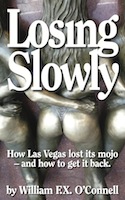Toobin, who disagrees strongly with Thomas about most matters constitutional, political and cultural, does a good job of showing why Thomas is a formidable judicial thinker. The interpretative concept of “originalism” is sometimes confounded with a simplistic literal interpretation of the words of the Constitution. Thomas argues that to understand what the Constitution meant to the framers, one needs to do more than read the words on the page and look to see how Samuel Johnson and perhaps Noah Webster defined them in their dictionaries.
Thomas is not a fundamentalist reading the Constitution au pied de la lettre; the original intent of the founders can be established only after research and reflection. The Eighth Amendment ban on “cruel and unusual punishment” can only be understood if one understands the thought of the period, the types of punishment then widely used, and the political and cultural traditions that shaped the thinking of the founders on questions of justice and punishment. One then takes that understanding, however tentative, and applies it to the circumstances of a given case today.
It is not the only possible way to read the Constitution, but it is a very interesting one and it may be the only politically sustainable way for the Court to read it in a contentious and divided country. Without some rule of interpretation that the average person can understand and accept as legitimate, the Court gradually loses legitimacy in the public eye. The originalist interpretation, whatever objections can be made to it intellectually and historically, is politically compelling. It resonates with the American propensity for commonsense reasoning. To say that the Founders meant what they meant and that the first job of a judge is to be faithful to their intent is something that strikes many Americans as sensible, practical and fair.
As Toobin tells the story, the revival of the Second Amendment was the first great triumph of the new approach. Thomas and others assembled a mountain of evidence that convinced increasing numbers of legal scholars that the Second Amendment must be read as conferring an individual right to bear arms — not merely a generic endorsement of the right of each state to maintain a militia. More, this right was intended as political: to check the power of the state to overawe and crush the people. As a result, the once seemingly unstoppable movement toward gun control has gone into reverse gear.
The startling possibility now beginning to dawn on some observers is that these same methods applied to the Tenth Amendment would lead to a much more far reaching revision to constitutional doctrine. The text of the Amendment is simple and short:
The powers not delegated to the United States by the Constitution, nor prohibited by it to the States, are reserved to the States respectively, or to the people.
The standard interpretation is that this merely restates an assumption that undergirds the Constitution as a whole and so has no special meaning or significance in law. If reading the rest of the Constitution leads you to uphold some act or law as constitutional, this amendment would not affect that judgment. Therefore it can be and usually is ignored. That is certainly what we were told to do with it in the hallowed halls of Pundit High.
But there is another view of this amendment. The Constitution of the United States confers specific, “enumerated” powers on the Congress, and many of the things that Congress does today are not listed among those enumerated powers. On his last day in office, President James Madison vetoed what today we would call an infrastructure bill. He thought the bill was a good idea, that the country needed the infrastructure and that the federal government was the right agency to provide it, but believed that the Constitution he had helped write provided no authority for Congress to act in this way. If Congress wanted to support infrastructure in the various states, the right way to proceed was to get an infrastructure amendment into the Constitution. Barring that, nothing could be done.
Taken seriously today, that approach to the Constitution would change the way Washington does business. Radically. The list of enumerated powers is short and does not include, for example, health care, education, agricultural subsidies, assistance to the hungry or old age pensions. Most of the New Deal and Great Society (with the interesting exception of civil rights laws which enforce the Civil War era amendments) would be struck down. Whole cabinet departments would close.
The federal government would not wither away completely; even on a narrow reading of the commerce clause (the clause that places the regulation of interstate commerce among Congress’ enumerated powers), Washington would exercise considerable authority over the national economy. But the balance between the states and the feds would change, and among other things, our federal tax burdens would fall, but the costs of state government would rise.
This is pretty much a Tea Party wish list, and it is why the Tea Party movement is so strongly identified with originalist interpretations of the Constitution. Unleashing the Tenth Amendment would move the constitutional status quo back towards the early 1930s when the “Nine Old Men” struck down one New Deal law after another. For Toobin and most New Yorker readers, it is hard to imagine an idea that more radically and totally runs against everything they believe.
-
Save the world from home
— in your spare time!
Disintermediation means cutting out the middle-man, and, by teaching you a new way of thinking about human nature and about your own unique self, Man Alive! puts you in charge of your own philosophical affairs.The book's objectives are precise and concise: To take the claim of justice away from the state, the mantle of intellectual authority away from the academy and the experience of reverence away from the church. It puts all of those things back where they belong — in your mind. There is no middle-man on truth.
More by Greg Swann

FREE Willie
A 100% FREE collection of some of the best of the Ramblin’ Gamblin’ Willie stories. You will want to read all of my books, but here is a cost-free way to get started.Buy my books at Amazon.com

Shyly’s delight
Work, play and love like a Labrador.
Print | Kindle
Nine empathies
Apprehending love and malice.
Print | Kindle
Father’s Day
More Married. More Husband.
More Father. More Man.
Print | Kindle
Loving Cathleen
A Love To Live Up To
Print | Kindle
Sun City
Loved ones die. Life goes on.
Print | Kindle
Losing Slowly
How Las Vegas lost its mojo – and how to get it back
Print | Kindle
Christmas at the speed of life...
Ramblin' Gamblin' Willie's Christmas stories
Print | Kindle
The Unfallen
A love story
Print | KindleMy other writing isn't collected in one place, but here's a shopping list for finding the best of it:
- Greg Swann writes – fiction and early essays.
- PresenceOfMind.net – a weblog I maintained in the early years of the new millenium.
- BloodhoundBlog – a national real estate weblog I started and contribute to. Much of the content there will be real estate related, but everything I write is focused on the self, and this is best represented in the longer essays.
- SplendorQuest.com – a weblog devoted to celebrating the uniquely human life.
 New at SelfAdoration.com
New at SelfAdoration.com- Silent cinema in three quick glances: Emily Brownbangs at the conception of guile.
- Love at first sight, twenty-five years later: Someone to thrive with.
- My only points of disagreement with Ayn Rand, libertarianism and scholarship in general: Everyone has been wrong about everything, going back forever.
- Ayn Rand and me – why my homework is late…
- An infinity of souls.
Email Greg Swann
GSwann@PresenceOfMind.net
Fair warning: Your name and email address will be kept confidential, but unless you say otherwise, your text is blogfodder by default.SplendorQuest done socially
I speak your language
I am delighted to speak anywhere, anywhen, and I am interested in any opportunity you can come up with for me to evangelize egoism. I am rich in ideas that, so far, few of us seem to prize. If you value the idea of Splendor in the way I do, let's talk about how we can increase our numbers.
Search this site
-
Recent Posts
Recent Comments
- Fifty shades of bleak: Looking for love everywhere it isn’t. | SelfAdoration.com on Currency exchange: The trade that matters most can never be quantified financially.
- psi2u2 on Oxford’s Torment: The Latest Chapter in the Shakespeare Mystery.
- psi2u2 on Oxford’s Torment: The Latest Chapter in the Shakespeare Mystery.
- Greg Swann on Oxford’s Torment: The Latest Chapter in the Shakespeare Mystery.
- psi2u2 on Oxford’s Torment: The Latest Chapter in the Shakespeare Mystery.
SplendorQuest on iTunes
Blogroll
Archives
- February 2014
- January 2014
- January 2013
- December 2012
- November 2012
- April 2012
- March 2012
- February 2012
- January 2012
- December 2011
- September 2011
- August 2011
- April 2011
- February 2011
- January 2011
- November 2010
- September 2010
- August 2010
- July 2010
- June 2010
- May 2010
- April 2010
- March 2010
- February 2010
- January 2010
- December 2009
- November 2009
- October 2009
- September 2009
- August 2009
- June 2009
- May 2009
- April 2009
- March 2009
- February 2009
- January 2009
- December 2008
- November 2008
Categories
- Photo credit: Manhattan Skyline by Francisco Diez.

